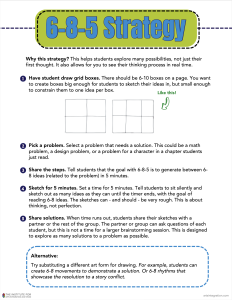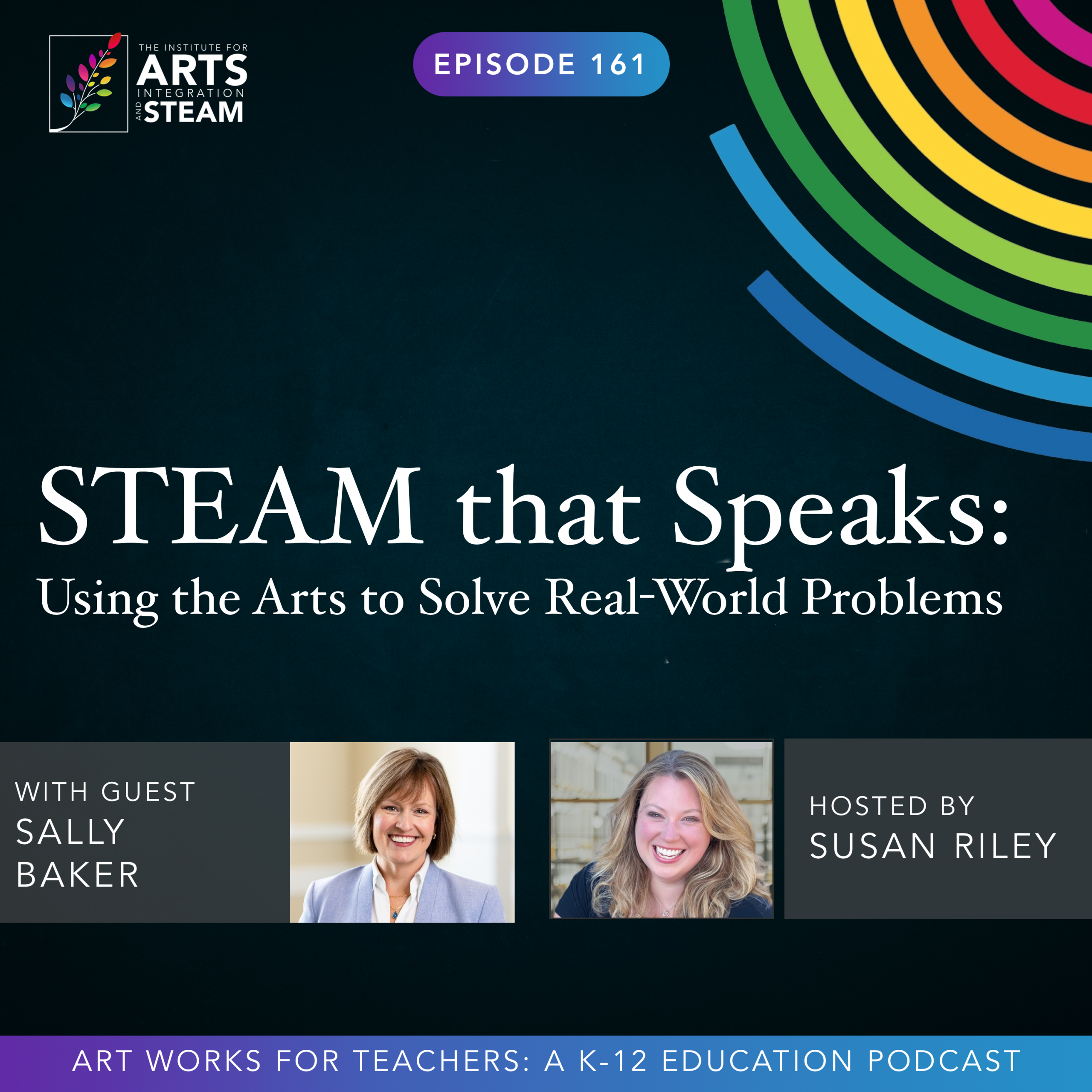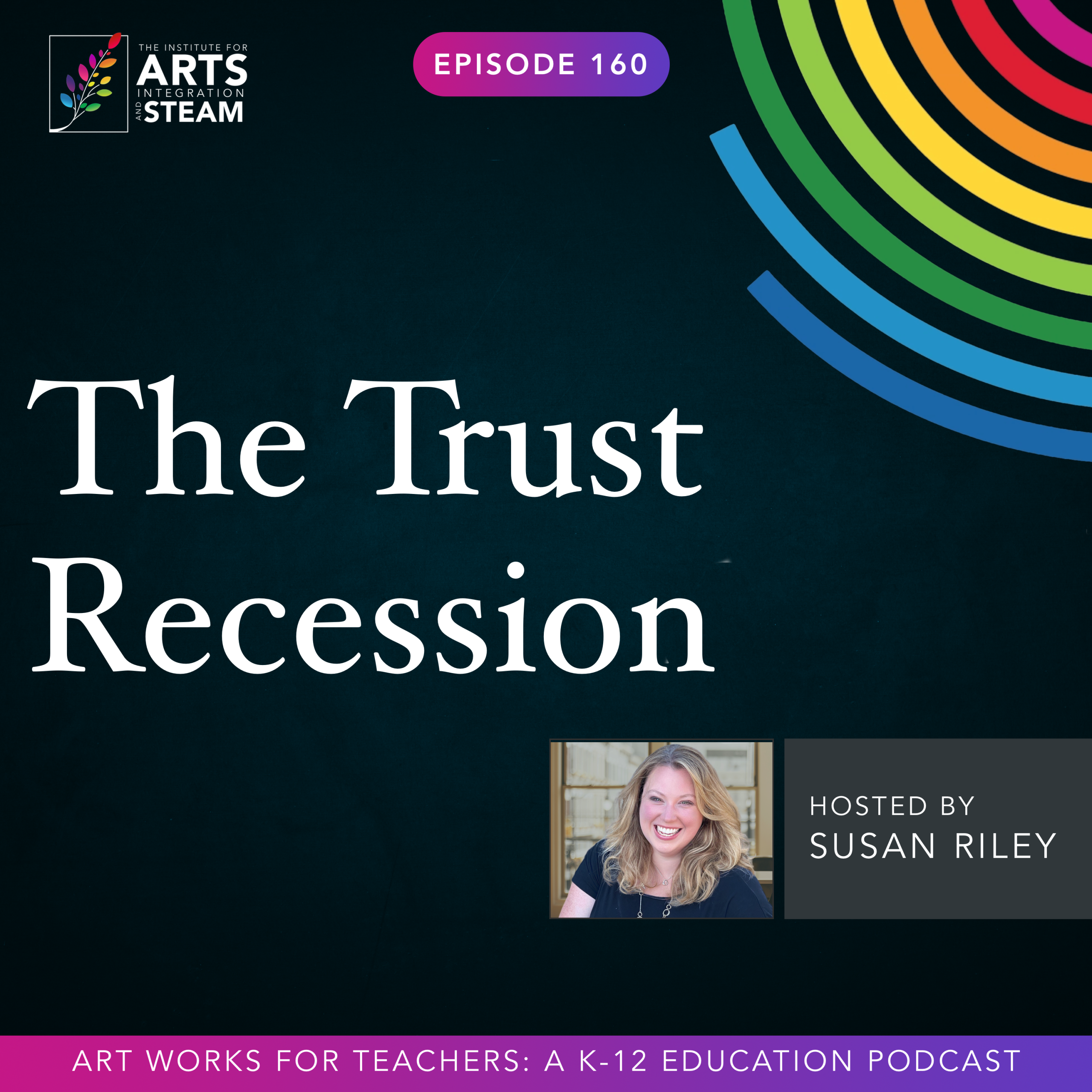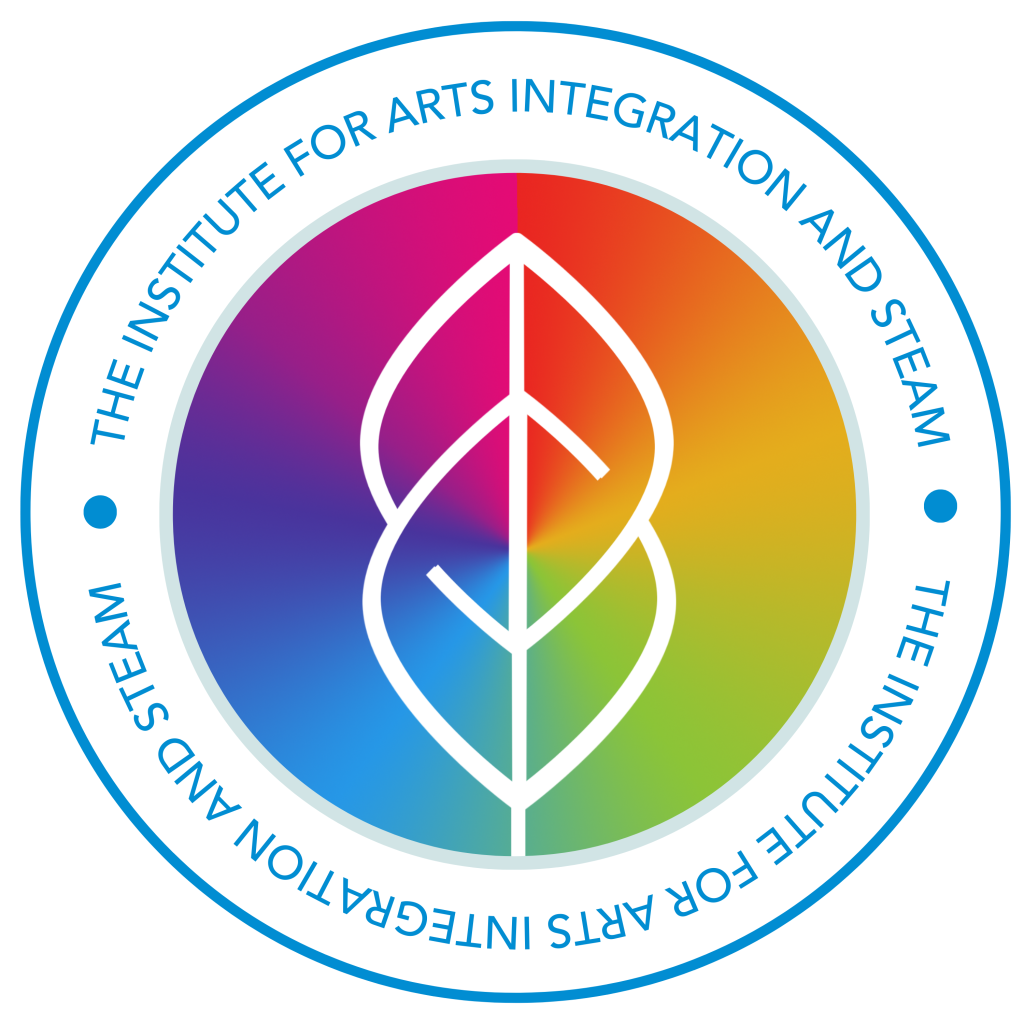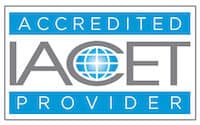ART WORKS FOR TEACHERS PODCAST | EPISODE 126 | 31:13 MIN
Ready, Fire, Aim!: A New Mindset for Seeing Success
Ever feel like you're stuck in planning mode, waiting for the perfect moment to take action? In this episode of Art Works for Teachers, Susan dives into the Ready, Fire, Aim mindset – jumping in, taking action, and refining as you go. She shares why stepping outside your comfort zone sparks creativity, how constraints can actually boost problem-solving, and practical ways to bring arts integration and STEAM to life in your classroom.
Enjoy this free download of the 6-8-5 Strategy.
Hello friend and welcome to another episode of Artworks for Teachers. I'm your host, Susan Riley. And today I want to share with you a strategy, actually a set of strategies that I think are going to be really helpful for you as you continue your journey into creativity, arts integration, STEAM, project-based learning, anything that requires or goes beyond traditional learning. And so I think you're going to love this because
It's really applicable to almost any situation. It's more than a strategy really. It's more like a mindset. So right now I'm reading this book from Michael Masterson called Ready, Fire, Aim. And it's a business book because as you guys know, we've shared this on the podcast frequently. My training is as an educator, not as a business woman. So I find it really helpful for me when I'm learning and at various stages of our business growth to go reach out to other mentors, or especially to read books from those who have done it before and have had great success. And so Michael Masterson is one of those people. And this is a hot tip, by the way, that I think applies anywhere. Creativity flourishes when you move beyond your typical boundaries, right? And so as you all know that I'm writing a book about creativity and in part of the research that I've done for that.
There is a lot of studies that show that creativity is sparked when you get outside of your comfort zone. So if your comfort zone is teaching third grade, you might find a lot of inspiration in the field of cooking or engineering or in the medical field. And you might want to medical journals because maybe that's fascinating to you. And something that you read in that medical journal might be able to be used in your classroom and you would never have thought of it if you hadn't stepped outside of your comfort zone, right? So I find that when I read business books like this, I find a lot of principles in there that can be applied to the classroom, that can be applied to creative learning, and that can unlock a lot of possibilities that maybe we hadn't considered before. And that is very true in this book, Ready, Fire, Aim.
Now, apparently this is a very popular business book. Many of my mentors have read it, swear by it. It provides like a map for them of each stage of their growth because Masterson identifies in this book the stages of growth that businesses go through and what happens and what you should expect in each of those stages, as well as how not to get stuck in a stage.
And as I've been reading this, I've been thinking, how applicable is this to both schools and to educators? Because there's, just think about what I just said. You could get stuck in a stage. So how many times have we gotten stuck in doing the same things, the same ways, the same time of years? Like I can tell you as an educator, that happens. And for good reason, right? Because we were exhausted.
But also because it's our comfort zone, right? We don't necessarily want to get stuck there. We want to grow. We want to become the best educators that we can be. If you're a school and you're working on an initiative like Arts Integration or STEAM or project-based learning, it's really easy to get stuck in the first stage, right? Because the first stage comes with a lot of problems that you've got to kinks, you've got to work out. Everybody feels like they're building the plane while they're flying it.
No, that's not a unique situation to you if that feels like you right now. That's everybody in the first stage. But you can't get stuck in the first stage. You gotta move past that in order to get to the results that you're looking for, right? Anybody who's trying arts integration or STEAM or project-based learning or any kind of creative approach is looking for a different way to attack the issues that face us in education, like student apathy or lots of academic issues that we see going on. Still, after COVID, we're looking to work on teacher retention and making our teaching profession a desirable one, right? There's lots of things that all go into those components. schools that are using creative approaches like these
They're not looking for status quo. They're looking to break outside of the box. And the results they're looking for are increased student attendance, increased student achievement, and increased teacher retention, right? And all of that is possible, but not if you get stuck in the first stage, right? And so as I'm reading this book of Ready, Fire, Aim, I'm thinking, this is so applicable to schools and teachers and where they're at. And so I want to kind of outline some of those things for you today, some takeaways that make this really practical.
for you as well. Now, let's just start with the title itself because I think this is gonna frame our entire conversation and our mindset around this. Ready, fire, aim. It's backwards, right? Typically we say ready, aim, fire so that we get ourselves prepared. We then aim in the direction we wanna go and then we fire, we execute, right? And as educators, this should sound really familiar, right? We prep, we get our lessons prepped we prep to bring a new initiative to the table, right? We get ourselves ready for whatever it is that we want to present, then we aim. So we look for what is our, what are our goals, where are we headed, what are we trying to accomplish, all of those things. And we get really, really specific about targets that we're looking to hit, right? So if we're
If we're trying something for the first time, we might give ourselves a lower bar than if this is something we've tried four or five times and we have some data behind it so that we know how to ramp that up, right? That's our aim stage. And then fire, our execution part. So how are we going to deliver the lesson? How are we going to provide the professional development to get us ready to actually move forward? What data points are we looking at? Those are the things that go into the fire stage. Yeah.
Well, in this premise from Michael Masterson, the idea is that yes, you spend time preparing. You have to spend time preparing. But then instead of focusing so much time, know, fine tuning and that aim section, we just get straight into execution. Just try it. Get out there, do it, fire, execute, right? And then once you have that experience of doing the thing, then you can look at what was the result so that you can fine tune and make it better. So ready, fire, aim. And again, as I'm thinking about this for schools, let's start with schools because I think that's a beast that has a larger bucket that we could think about, especially since creative efforts often don't take place in isolation, right?
If you are a teacher who is listening to this podcast, you are probably already doing much of this, or you've been kind of thinking about, I like that idea and I want to try that idea. But as you're doing it, you're also sharing it with colleagues because teachers don't ever work by themselves. We work together. And so if something works, you're sharing it with a colleague, right? And typically schools who are looking at arts integration or STEAM or project-based learning, these approaches, it's because they have multiple teachers who are using this finding success with it advocating for it and are like, yes, let's do this. Maybe not everybody, probably not everybody, but at least a few who have brought this up and have said, let's use this because this is working. And so if we're going to take the premise of ready fire aim and look at it from a school standpoint, a couple of things to be aware of if you're planning this as a large school effort. So you need to consider that there are three stages of growth. So not only is there the three stages of ready, fire, aim, but then there are also three stages that almost every school will go through in order to see success at the other side. And remember success, what our success metrics are, right? Like what does done look like? Done looks like students who are achieving higher on standardized tests, yes, but also seeing improvements in their social emotional aspects of learning. They're coming to school on a regular basis. They are engaging more so that they're less apathetic to their learning, but they're invested in their learning because it is relevant to them. Teachers are staying longer and they are excited about their work. These are the things that let us know this is what done looks like. We have reached success because we have hit these things.
So in order to get there, you have three growing stages that have to happen. The first is getting buy-in, getting everybody on board, getting everybody to get excited about this effort, and perhaps trying some strategies, right? If that's where you are as a school, something like our accelerator program's great for that because you have the lessons prepared. Teachers don't have to create the lessons. There's lessons right there for them.
so that they can immediately try it, right? Execute. They can get ready. They have PD in the platform. So they're getting ready. They can try a lesson, fire. And then once they've tried that lesson, then they can start making tweaks and modifying those lessons like, I liked this, but I think it would be better if I did an alternative art form here because my students really like music instead of the visual art that was presented. So I'm gonna tweak this lesson or tweak the next lesson that I try to include the art forms that my students really enjoy. So ready, fire, aim, right? It's built into the whole accelerator platform and the accelerator is great for those beginning stages because it's easy to get buy-in when you have lessons that are already done and that are proven to be successful and that all you have to do is follow the directions.
It's easy to get buy-in when professional development is available for you and is helpful. It's directly connected to the lessons you're working on. It's not some random PD that just for funsies, right? The PD and the accelerator is directly connected to those lessons so that if you don't know an artistic technique from the lesson that is being presented, we've got a workshop for you that's really quick, can be done in a planning session like for 20 minutes or less, that's gonna teach you that technique so that you can immediately go use it, right? And then you also have the opportunity to then take those things and adjust. And so when teachers have access to that, and then we also provide strategies for them so that it's low risk, easy to start to use, it can be done in five minutes. You don't even have to use a full lesson plan. You can just start with a strategy. That's a great place to begin. But what happens is that many schools stop there, right? Because you'll see success with strategies. You'll see success with a strategy that's used as a bell ringer or as something that's used to introduce a topic or is used to pull together a topic at the end, right? You'll see success with that with your students. And you'll want to do it again and again and again, which is awesome. But then it doesn't stretch you to the next stage, right? So you get stuck there. And remember,
We were looking for those results and you can't get to those results if you stay stuck at a stage. So the second stage that schools will often go through after they get buy-in, after they get strategies going, is determining, okay, we know it works. We know that these strategies work. We have lessons that we can implement. Now let's see if we can bring those lessons and weave them into our current curriculum. So.
It's not just trying them at random and seeing what works and kind of throw in spaghetti at the wall and seeing what sticks. Now it's purposefully integrating it into our curricula and getting community buy-in for it. So this is when we start to see schools bringing in community partners to support their efforts. They might be applying for grants to provide arts integration, professional development with teaching artists, or to support perhaps some
some of their staff getting certified as arts integration specialists so that they can do this work on their own and not have to rely on a ready-made platform like the accelerator, but instead can craft it for their population. One example of this is that our accelerator, all of the lessons are in English, right? But maybe your school is dual language. And you need lessons in English and Spanish. So the accelerator is not going to fill all the gaps for you. You need to extend into stage two, where you're looking at what lessons are going to be effective and purposeful in our curriculum. Where can we insert this in a natural way for things that are currently not working for us? Lessons that are redundant, curriculum areas where we have some gaps, where we know our students struggle.
And so we're going to insert an arts integration or a STEAM lesson there in order to see students be more successful. That's a purposeful planning of integrating the arts into your school. And then while you're doing that, you're also, again, applying for those grants, welcoming the community in, teaching them, here's what we're doing with your children and here's why. And we're starting to see this kind of success. That's STIG2.
Stage three is after you've gone through all of that, now you're ready to kind of fly on your own. But that comes with a lot of different challenges, right? So now you've got lessons that you've decided to insert into your curriculum. You've got people who are trained as specialists who can support your teachers. And you've got community on board. Well, now you've got to fly. Now you've got to actually be doing this on a consistent basis. It needs to become a part of the culture of your school. It's just the way we do things here.
Right? That takes a whole lot of different, you know, focus components. It means coaching each other and having teachers like go into each other's classrooms, watch lessons, provide feedback for each other so that it's not landing on administration. It requires a community that understands what you're doing, supports it, and actively advocates for that. And so they're not questioning anymore, why are you doing art projects in science?
They understand it, they're excited about it, and they want to be a part of it. And also as new community members come in, they become a part of that conversation. As new teachers come into the school, they also become a part of that community. And there's this beautiful synergy back and forth of new ideas, old ideas, kind of working together in this realm of arts integration and state. Those are the three stages. So you have to be willing to understand, there are three stages involved and I need to be able to move from one to the next. I can't get stuck in one. And that's where Ready Fire Aim comes in. So knowing again, what you're starting with and then trying out something right away. So when you're planning for each stage, be thinking about what do we need for preparation? How do we get ready? What do we need to fire? What do we need to execute on right away? What's something simple that is quick, not necessarily easy but that is simple that we can get some immediate data from and then adjust those, fine tune those. So maybe in stage two, you're looking at building community buy-in. You've got staff buy-in in stage one, community buy-in is in stage two. Well, maybe that is executing on an arts night and inviting parents to that arts night where you're informing them about what this approach looks like. Here are lots of different examples of how we can bring these things together. Here's why this is important and then get surveys back at the end of the night on what they enjoyed, what they still don't understand, so that you can fine tune that before you get into stage three. So I'm hoping that that makes sense. So that's in a nutshell for schools, how you can implement things like arts integration or STEAM using this ready, fire, aim kind of methodology, right? And by the way, we have things for each of those stages, right? So accelerator is great for stage one.
If you are resonating with stage two, that's when our Arts Integration Certification for teachers comes in. You want to get those teachers certified so that they can support and coach your other teachers who are still working through it. And then stage three, that's when I would recommend school certification for any school who is at stage three and ready to really make this a part of their culture. That's when I recommend our school certification program. Now, if you're an individual teacher who's working on this,
Let's look at this from a very practical, tactical standpoint, right? When you're looking at lesson design, we're going to bring this all the way down as a teacher to ready fire aim in terms of lessons. Let's say you're working on a lesson and you really want to bring a creative approach to this. So you're going to prepare by looking at studying strategies that you could use you're going to look at, there an artistic technique that I have to be aware of before I put this in place, right? You're getting yourself prepped. Then you're going to execute the lesson. You're not going to take all the time to fine tune all the details and think about, I could add this adjustment here and I might need to think about this place here because that, my friend, is when a lesson becomes a unit or a big project.
And that is the barrier to entry for arts integration or STEAM, oftentimes. Many times teachers are like, it's too big, it takes too much time, there's too many things that are evolving, because we end up starting in that ready phase and then adding little things to it, because we're trying to aim, right? We're trying to focus and get it really refined and get it right for the, that it's the most beautiful project in the world. And then our students are fully engaged and that it's just wonderful.
And then when we go to execute it, it's a nine week project and we don't have time for that. So, so back it up, make your lesson bare bones, but look at what are the core aspects that I need to focus on here, right? I need a hook and that should probably be a thinking routine of some sort that's engaging them creatively. I then need to move into teaching explicitly the content on both sides. And then I need to do an activity that includes some sort of creative mechanism.
And then at the end, I need an assessment. Make it that bare bones, that's prepping you. Then execute the lesson, put it in place. It's not gonna go perfectly, it shouldn't. It should never go perfectly the first time that you do it. You should be able to identify lots of holes, right? this landed wrong, this wasn't quite right. It'll still be great, cause your kids will love it. Because again, you're weaving in those creative approaches, right? And it's making it relevant for them. But you as a practitioner are gonna notice Ooh, I wish I would have done that differently. That is when the aim part comes in. That's when we take a look at that lesson, we refine it, we go back to it and we're like, okay, from practical experience, this worked, I need to shift this down here and I need to add this here. So that next year, when you do that lesson, it's gonna go smoothly, right? So that's what the practice of ready fire aim looks like for a teacher. So a couple of notes for teachers as you're using this kind of method or thinking around your teaching approach. First, don't get stuck in the ready stage. Don't spend all of your time there. You're never going to be able to plan for every single outcome. So don't even try. Don't get stuck there. Give yourself constraints. This is maybe my number one tip on the entire thing, both for schools and for individuals. Creativity thrives in constraint. It's an oxymoron, but it's true. When you have you know, a set of boundaries that you have to stay within, whether that's a time boundary or whether that is a materials boundary or if it's a planning boundary, whatever boundaries you want to set, whatever constraints you have, your beautiful brain will take those constraints and it allows your brain to come up with solutions that it otherwise would not have been able to do. Because without the constraint,
There's too many possibilities. It's too wide open and your brain becomes overwhelmed and overstimulated. So you want to offer a constraint. So for example, if you're planning and you're in the ready stage, give yourself a constraint of writing that bare bones lesson in 30 minutes. That's it. 30 minutes to write a full arts integration lesson. That's short period of time, but you can do it. Your brain will fill those gaps in that 30 minutes, right? So give yourself constraint.
When you are applying, when you're firing and executing on that lesson, give yourself the constraint of this lesson's only gonna be one day, one class period. That's it. It's gonna last for 45 minutes in math. And I don't care if we don't finish the project, that's what we gotta get done. 45 minutes out the door, okay? That's a great constraint. And then when you're looking to the AEM section, right, with the refinement, don't go overboard here. Give yourself like, wanna pick the four most important things that I saw in that lesson that I need to fix and tweak that and then put it into place and see what happens, right? So you're continually refining and getting better without being nitpicky, right? So constraint is a beautiful thing. You can also use constraints with your students. So I want to give you an actual strategy that I shared in our strategy newsletter a couple of weeks ago, which by the way, if you have not subscribed to our weekly newsletter, you're missing out because every Tuesday I send a strategy. There's no pitch, there's no, you know, look at this, whatever else that we're offering at the moment, conference, none. It is a purely just a single strategy that you could try for that week. It's meant to help you ready, fire, aim, right? And so if you have not signed up for that newsletter yet or that strategy newsletter that goes out every Tuesday,
I highly encourage you to hop on our list. Super easy, just go to artsintegration.com, go all the way down to the bottom of the page, and there is an email signup, and it will automatically add you to that Tuesday newsletter. And you'll get strategies like this every week, but it's just one strategy with ideas on how to execute on it so that you can see some creative success every week. Okay, so now, off of the soapbox there. Here's a strategy I shared a couple of weeks ago that models the idea of constraint. So it's called the 6-8-5 strategy. The idea here is that you start with a problem of some sort. It could be anything, right? It could be a math problem. It could be a problem that a character from a novel that you're studying is dealing with. Anything that you can think of. Start with a problem and then have your students draw between six to 10 boxes on a piece of paper, just like a grid, okay? Big enough that they can sketch something in it. So not teeny tiny boxes, but not too big so that it goes beyond a single piece of paper. So once you have your grid drawn, the boxes drawn, then you're gonna be thinking about, okay.
What are six to eight ideas that I could fill in these boxes on how to solve the problem that has been presented to me? So if it's a math problem, what are six to eight different ways that I could solve that problem? And you're put each solution in a single box, okay? Now, they have to do this in five minutes. That's where the five comes from. So they have five minutes to create multiple solutions to a single problem. After they sketch for those five minutes, whenever the timer is up, it's done. Sketches are not meant to be beautiful pieces of artwork. They are meant to literally just be sketches. It could be like writing numbers to solve the problem. It could be sketching out, like if you're talking about solutions for a character in a novel, it could be sketching those out like it's a little graphic novel, but it's not meant to be like art. It's just meant to get your ideas down on the paper and you need to have six to eight of them. And again, that constraint of the five minutes, it's gonna cause your brain to not have to overthink, but to really think, okay, here's one, here's one, here's one, and just get it down on the paper. And then after that, your students are gonna share the solutions with each other. So now, if they have any blank boxes and they like a solution that appear used, they can fill those in into the blank boxes. So now they have up to eight to 10 solutions to a single problem. So this is really helpful because it allows students to not just go with their first thought. It allows them to think about there are lots of different ways that we could solve this problem. And this is a life lesson, right? This is an incredible life lesson. So not only can students do this in school, this is a great way for us as individuals to solve a problem, right? Just get as many ideas down on ways to solve that problem as possible. No judgment about which one is the best way, not yet. Not when you're getting the ideas out.
That's saved for once you look at the solutions to go, okay, this one could work, but maybe it's not the best idea. And then that refinement, again, ready, fire, aim. So you get the ready with the six boxes or the eight to 10 boxes, the fire, the execution of here, I'm gonna fill these in with lots of different ways to solve a problem. And then the aim section is which one's gonna work best for the problem that has been presented. So this is a great strategy you can use with that whole mindset of ready, fire, aim.
Some additional ideas or ways to make this connection to the strategy is, like I said, you can sketch out story ideas or multiple persuasive arguments for a single statement, right? You could explore lots of different ways to solve a word problem. You could do quick prototyping of an idea or a solution to generate several hypotheses, or you could brainstorm six different causes of or consequences of an event like the Civil War or the civil rights movement, anything like that. So I hope that you can see how Ready Fire Aim can apply in your classroom, in your life, or in your school, and that this episode has been helpful for you. It is always exciting for me to see different ideas out in the real world being used in a totally different field and ways that we can apply them in education in a really meaningful way that doesn't overwhelm us, but that instead allows us to get better as practitioners. So thanks so much for tuning in today, and I will see you on the next episode of Artworks for Teachers.

